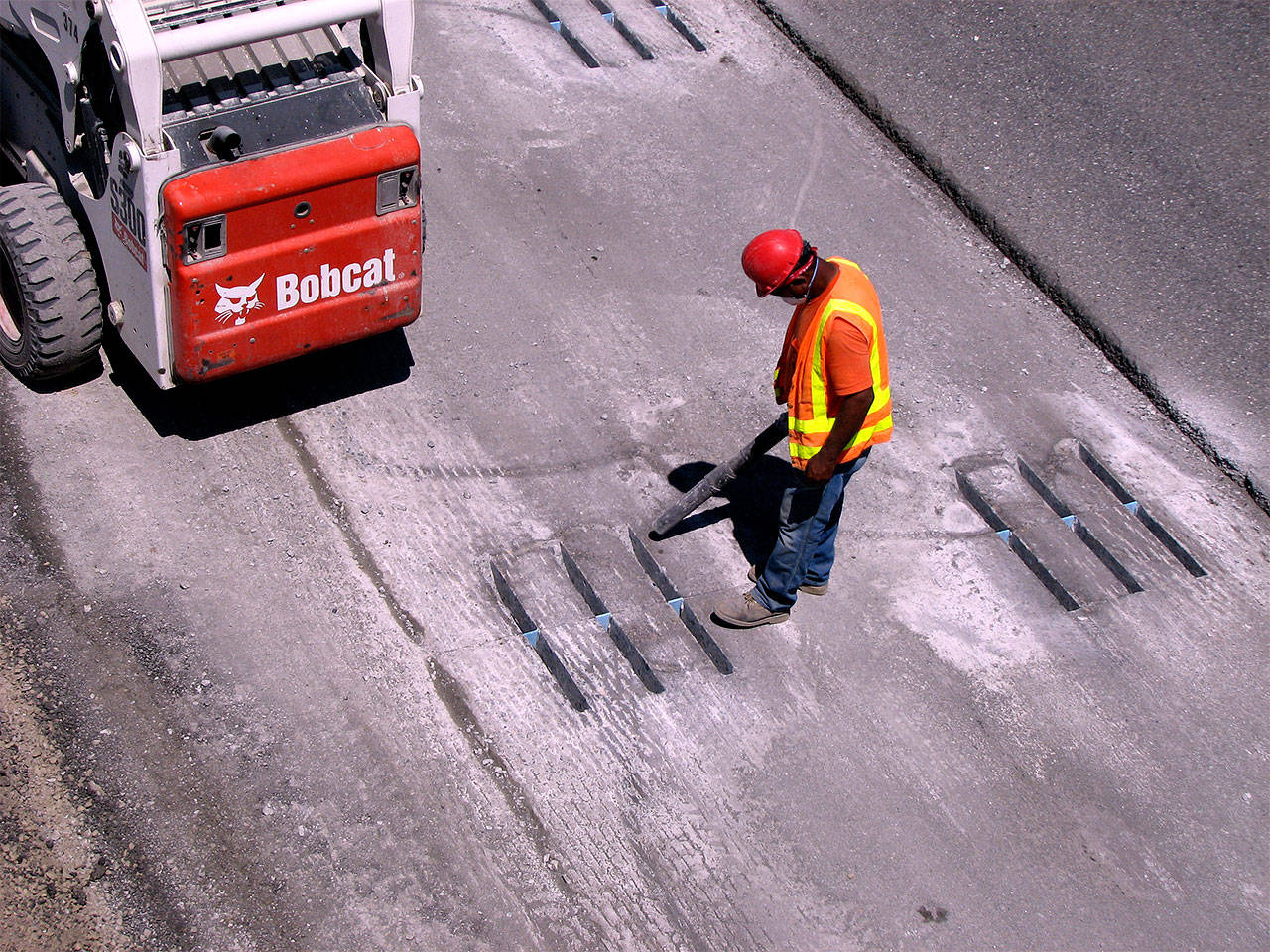Street Smarts reader Mel Eaton, of Snohomish, wrote: “What is the purpose of those rows of six rectangles in I-90 on our way to Ellensburg?” With a set of three divots placed in each path of a car’s tires, he wondered if they were some state experiment. “They do test a vehicle’s shock absorbers,” he noted.
Turns out, they’re not trying to wake you up.
Or sing you a song.
Nor is it Sasquatch sharpening his claws.
“These are dowel bars,” responded Meagan Lott, a Washington State Department of Transportation spokeswoman for the south central region.
“When concrete is poured and cured, joints are created to control cracking and to provide relief from expansion due to temperature and moisture changes. As vehicles travel over the concrete joints the weight of the vehicle passes from one panel to the next. The weight of the vehicle is placed on the edge of the panel where the panel isn’t able to withstand all of the vehicle’s weight and over time causes cracks as the concrete shears off the edge of the panel,” Lott wrote. “As a cost effective way to fix the panels and extend the life of the roadway, we insert steel rods (dowel bars) at the concrete joints to help transfer the weight from one panel to the next.”
It’s called “dowel bar retrofitting.”
“This is done by cutting six vertical slots (three in each wheel path) across the joints or cracks. The old concrete is then removed from the slots and the epoxy-coated dowel bars are placed into the slots, filled with grout and then the joints and cracks are filled with waterproof caulk. The final step is grind the joins to remove excess grout and make the panel smooth for travel,” she said.
Over time, that smoothing work, like all road work, can wear down from the weight of traffic.
Have a burning question? Send it to streetsmarts@heraldnet.com or call 425-339-3432.
Talk to us
> Give us your news tips.
> Send us a letter to the editor.
> More Herald contact information.

























